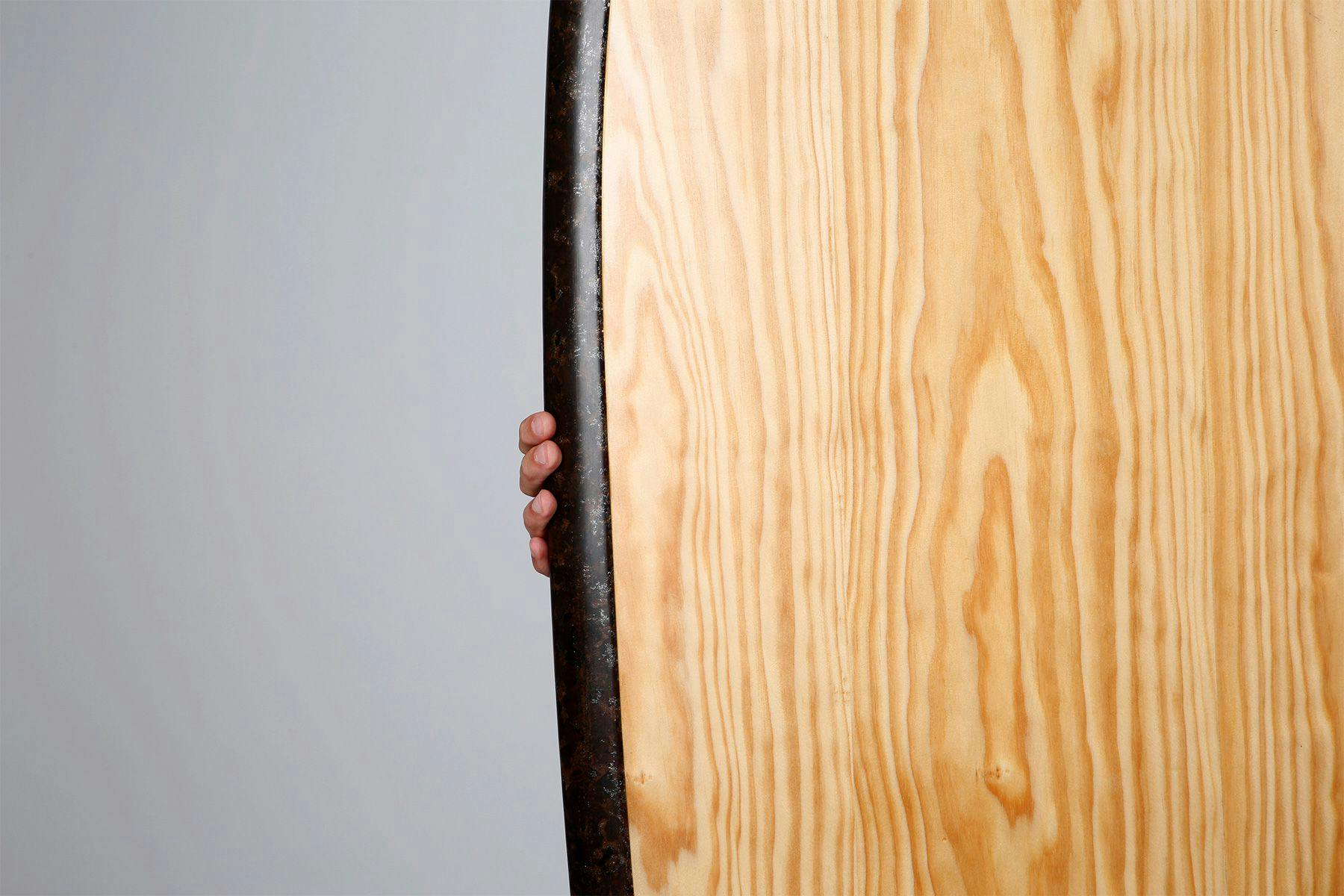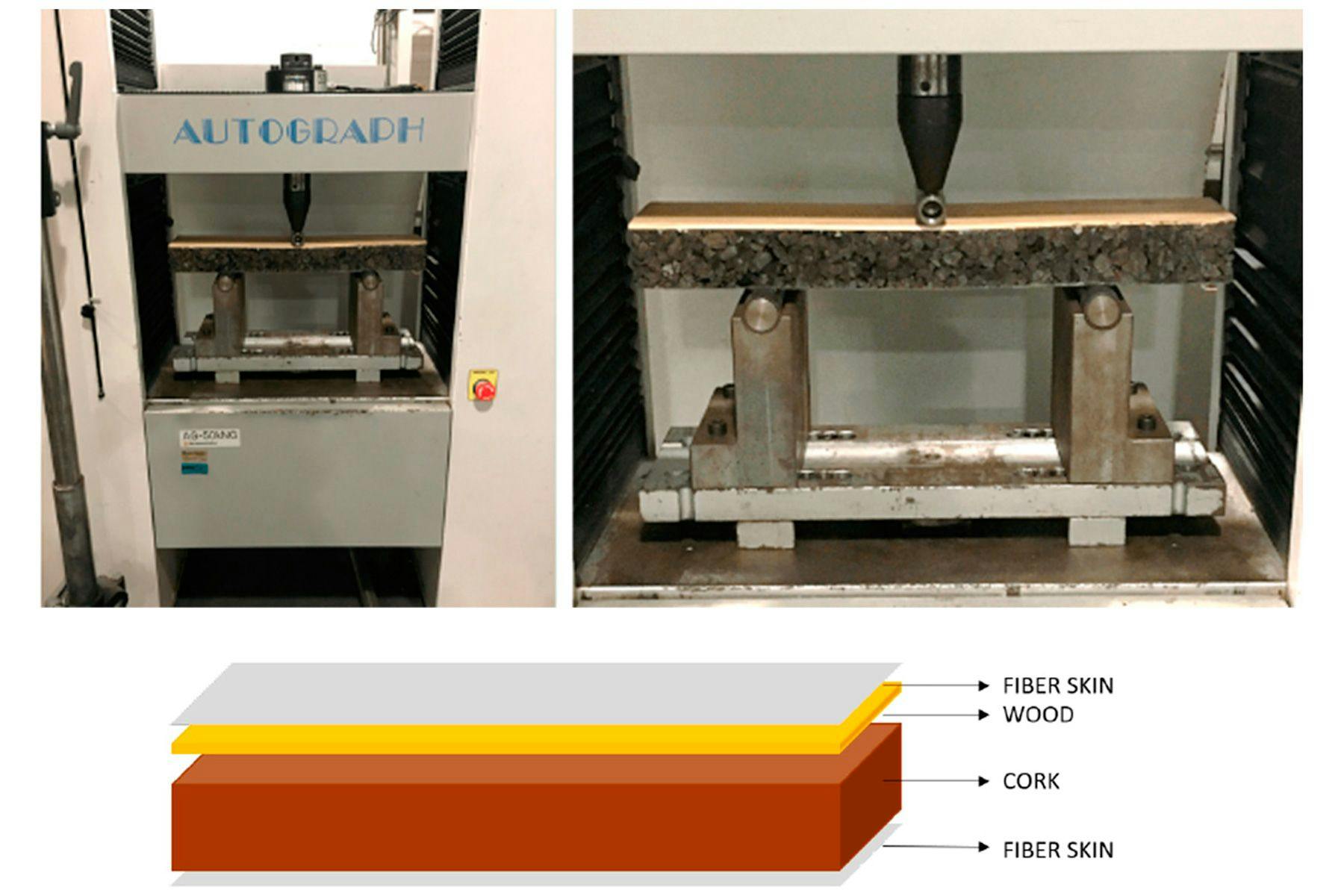SurfboardsFrom Tree to Sea

A Study on Expanded (Black) Cork for Eco-Friendly Surfboards
When placed on a timeline, the modern, post-Blake surfboard is less than a hundred years old; that is, relatively new. And whilst both our understanding of design, performance, and functionality has evolved, it is safe to say that there is still room for experimentation – especially when it comes to manufacturing methods and growing away from oil-derived materials which aren’t in line with the nature-oriented values the surfing culture boasts about.
“Cork is an amazing material for several products because it provides insulation (both thermal and acoustic), is pleasant to the touch and nice aesthetically, is fully natural and recyclable, and has a negative carbon footprint,” says José M. D. Correia of the Centre for Mechanical Technology and Automation at the University of Aveiro, Portugal. A local surfer from Ovar, José has tapped into his family’s woodworking traditions, as well as the fact that Portugal is the world’s biggest producer of cork, to research how Expanded Cork, an agglomerated form of the raw material, could be used as the core of surfboards. Carried out under the supervision of Dr Ricardo Sousa’s research group at the University of Aveiro as part of José’s master’s degree in Mechanical Engineering, the study outlines the environmental impact and mechanical properties of EC for the development of more sustainable surfboards.

Over the last few years, cork has become known as design’s “green foam”. Green because it is natural, recyclable, and stores more (approximately 4.8 times the value of) CO2 than it emits during manufacture and use. Foam due to its softness, low density, water-resistance, shock-absorbance, and multi-functionality – properties that owe to it featuring an interconnected network of cells that fills internal spaces and thus increase the load resistance without compromising density.
“Most people ignore that cork is actually the outer bark of a tree (Quercus Suber),” highlights José. “This bark can be removed every nine years on average, and only a quarter is used to produce wine stoppers – the remaining can be ground and then glued together to form cork-agglomerates, which, despite having been processed, retain its most relevant properties in an isotropic manner.”
Expanded cork, also known as black cork, is one of such agglomerates. After being extracted from the outer bark of the tree branches, a section with lower commercial value and use, the bits of cork are processed into grains. These are then put on an autoclave (at roughly 300–370 °C) where, due to the volume increase in their cells, they expand and release a substance called suberin.
“While regular cork agglomerates resort to thermoset glues to be shaped, which spoils its green character somewhat, expanded cork is fully natural,” explains José. “The suberin acts as a natural glue, supporting the agglomeration without the need of synthetic binding agents. So, expanded cork is lighter than normal cork – and it is 100% natural.”

Taking the aforementioned properties as a premise, José figured EC would work well as a more sustainable alternative for the core of a surfboard. Indeed, the surf industry can currently make use of several plant-based options for resins and fibre cloths – not so much for blanks. And whilst some shapers and designers have explored the potentials of white cork agglomerates, its high density has proven to be an issue. That’s where black cork – with its lower density, energy-absorption capabilities, and negative carbon footprint – comes in.
“A surfboard is a complex product that demands many engineering and design skills. One must start from the choice of material: the core, the skins – the whole composite should work structurally but also be lightweight. At the same time, it must have the correct amount of flexural and torsional stiffness to facilitate wave-riding. Finally, the design must be pleasant, the hydrodynamics must be efficient, and the volume must be adjusted to each type of surfer and surfboard.”

For the research, José and the team designed a 6’6” x 21 1/2” x 2 3/5 prototype with 41.9 litres and 6.84kg. In order to be manufactured with traditional surfboard shaping processes and to withstand the high bending and torsion loads present during surf practice, the EC core was reinforced with a 3-4 mm wooden layer at the top, which gave the board mechanical resistance. A thin layer of fibreglass and resin added to that resistance whilst also rendering the board waterproof and keeping it transparent, so the cork remained visible.
They conducted a set of mechanical and virtual tests to check how well the expanded cork responded to real-life surfing situations: from three-point bending experiments, which help determine the flexural modulus of the composite structure, to uniaxial compression and torsion loading tests, which are particularly relevant in wave-riding where curves and abrupt changes in direction are common. Structurally, the board was sound: “Our biggest discovery was the possibility to use this material – as the core of a composite – with success in a structurally demanding application like a surfboard.”

Environment-wise, they found that given the CO2 absorbed throughout the cork’s lifecycle, the EC board had a negative value of CO2 emissions (-116.229 kg CO2/m3), making it the only type of core material with a negative carbon footprint when compared to traditional blanks such as polyurethane (PU) or Expanded polystyrene (EPS). The study also showed that the black cork used in the surfboard could retain its essential properties for more than 40 years; after that, it can be reused for different applications or simply ground for incineration.
The main downside related to the cost-effectiveness of black cork: expanded foams are lighter and cheaper to produce, and although cork is easier to recycle, it is also more limited in terms of supply. “Mass production will be always very difficult when it comes to cork-based products,” explains José. “However, as the study shows, the use of environment-friendly materials can help reduce the ecological footprint of surfboards, so by opting for alternatives such as expanded cork, flax fibre for the skin, and bio-resins, we can reduce up to 62.8% of equivalent CO2 emissions.”
As such, the effort to make the surf industry more sustainable isn’t one-sided, and, as José emphasises, it goes beyond the creation of manufacturing alternatives. “The surfer buying a surfboard is, after all, a consumer, so, price matters. And since it will be nearly impossible to beat the cost/quality ratio of surfboards based on oil-based foams, consciousness is the biggest appeal for the surfing community to change its mindset, to the point a surfer will think about the environmental impact of a surfboard when buying it.”
The bad news is, regardless of how “eco” surfers claim to be, when it comes to sustainability we are still finding our feet. The good news is that even if the process is slow, it is moving forward, evolving from what it used to be seventy-odd years ago, away from what was once essential but has now become detrimental, toward something we can truly boast about.
“Cork is not the only natural material with potential, there are many different types of natural fibres, such as flax, hemp, sisal, etc., as well as other tree barks that can be used as natural cellular materials,” says José. “And as the surf industry starts working with such type of materials, prices are likely to reduce, which will make easier to convince customers to go fully natural.”
*****
For more information on expanded cork surfboards feel free to reach out to José M. D. Correia or Dr Ricardo Sousa.